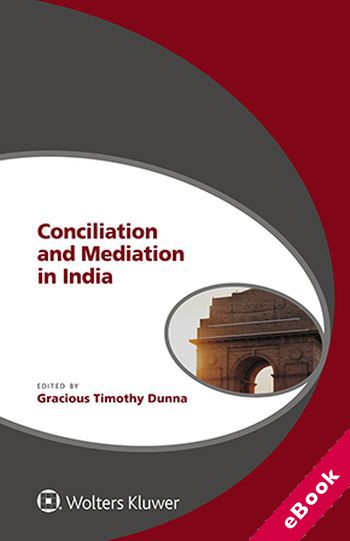We are now closed for the Christmas and New Year period, returning on Monday 5th January 2026. Orders placed during this time will be processed upon our return on 5th January.

The device(s) you use to access the eBook content must be authorized with an Adobe ID before you download the product otherwise it will fail to register correctly.
For further information see https://www.wildy.com/ebook-formats
Once the order is confirmed an automated e-mail will be sent to you to allow you to download the eBook.
All eBooks are supplied firm sale and cannot be returned. If you believe there is a fault with your eBook then contact us on ebooks@wildy.com and we will help in resolving the issue. This does not affect your statutory rights.
Conciliation and Mediation in India is a comprehensive and challenging work of formidable thought-leaders in dispute resolution with global reputations. It can be said that negotiation is about what to do, whereas mediation is about how to do it—how to make sure control is in the hands of the disputants. Although mediation (as well as conciliation) is taking hold in dispute resolution worldwide, among the nations, India shows the strongest signs of interest in developing a pervasive legal mediation culture. This invaluable book describes how mediation is used, and can be used, to resolve different types of disputes in India and international cases providing a comprehensive treatment of the legal framework, principles, and procedure of mediation.
What’s in this book:
Addressing the involvement of each of the stakeholders in the process (with relevant hints on practice), exceptional contributions from a diverse group of legal practitioners, academicians, in-house counsel, and foreign lawyers examine such issues and topics as the following:
The book includes a detailed commentary on Part III of the Arbitration and Conciliation Act 1996 and the 2018 Singapore Convention on Mediation.
How this will help you:
This book takes into account where India stands at present, covering statutes, international conventions, and academic literature, thus bequeathing a broad understanding of the subject for legal practitioners, judges, arbitrators, mediators and conciliators, users, and technical experts who wish to understand it. The nature and scope of this book should appeal most to practitioners, neutrals, and academics, including students, providing them with a profitable read on mediation and conciliation in India. One of its kind, this book stands up to scrutiny and meets the expectations of many making it valuable.